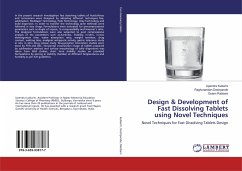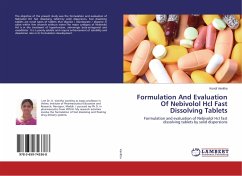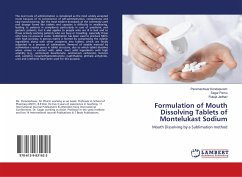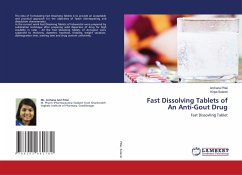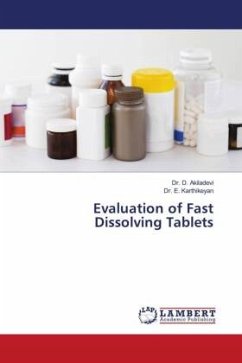
Formulation & Development of Rosuvastatin Fast Dissolving Tablets
Formulation Design of Rosuvastatin
Versandkostenfrei!
Versandfertig in 1-2 Wochen
26,99 €
inkl. MwSt.

PAYBACK Punkte
13 °P sammeln!
Floating systems or hydrodynamically controlled systems are low-density systems that have sufficient buoyancy to float over the gastric contents and remain buoyant in the stomach without affecting the gastric emptying rate for a prolonged period of time. While the system is floating on the gastric contents, the drug is released slowly at the desired rate from the system. After the release of the drug, the residual system is emptied from the stomach. This results in an increased GRT and better control of the fluctuations in plasma drug concentration. However, besides a minimal gastric content n...
Floating systems or hydrodynamically controlled systems are low-density systems that have sufficient buoyancy to float over the gastric contents and remain buoyant in the stomach without affecting the gastric emptying rate for a prolonged period of time. While the system is floating on the gastric contents, the drug is released slowly at the desired rate from the system. After the release of the drug, the residual system is emptied from the stomach. This results in an increased GRT and better control of the fluctuations in plasma drug concentration. However, besides a minimal gastric content needed to allow the proper achievement of the buoyancy retention principle, a minimal level of floating force (F) is also required to keep the dosage form reliably buoyant on the surface of the meal. Many buoyant systems have been developed based on granules, powders, capsules, tablets, laminated films, and hollow microspheres.



